 Activision releases a trio of cartridges for the Atari VCS home video game system, including Larry Kaplan’s Kaboom! (featuring graphics by David Crane). Kaboom! proves to be the most popular of the three games released on this date.
Activision releases a trio of cartridges for the Atari VCS home video game system, including Larry Kaplan’s Kaboom! (featuring graphics by David Crane). Kaboom! proves to be the most popular of the three games released on this date. ![]()

 Activision releases a trio of cartridges for the Atari VCS home video game system, including Larry Kaplan’s Kaboom! (featuring graphics by David Crane). Kaboom! proves to be the most popular of the three games released on this date.
Activision releases a trio of cartridges for the Atari VCS home video game system, including Larry Kaplan’s Kaboom! (featuring graphics by David Crane). Kaboom! proves to be the most popular of the three games released on this date. ![]()
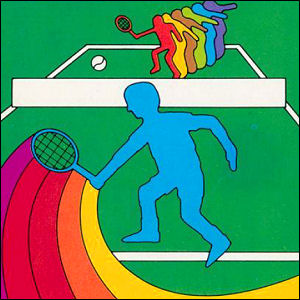 Activision releases a trio of cartridges for the Atari VCS home video game system, including Alan Miller’s Tennis.
Activision releases a trio of cartridges for the Atari VCS home video game system, including Alan Miller’s Tennis. ![]()
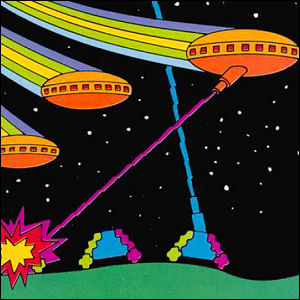 Activision releases a trio of cartridges for the Atari VCS home video game system, including David Crane’s Tennis.
Activision releases a trio of cartridges for the Atari VCS home video game system, including David Crane’s Tennis. ![]()
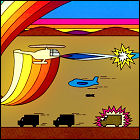 Activision releases Bob Whitehead’s Chopper Command for the Atari VCS home video game system. Inspired by the arcade game Defender, complete with a “radar view” of areas of the playfield extending beyond the edges of the screen, Chopper Command proves to be graphically superior to Atari’s own home version of that game.
Activision releases Bob Whitehead’s Chopper Command for the Atari VCS home video game system. Inspired by the arcade game Defender, complete with a “radar view” of areas of the playfield extending beyond the edges of the screen, Chopper Command proves to be graphically superior to Atari’s own home version of that game. ![]()
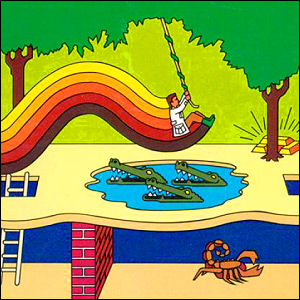 Activision releases the Pitfall! cartridge for the Atari VCS home video game system. Subtitled “The Adventure of Pitfall Harry” (implying that further adventures are yet to come), this becomes one of the Atari VCS’ “killer app” games, and is ported to other systems and updated for more modern platforms for decades to come.
Activision releases the Pitfall! cartridge for the Atari VCS home video game system. Subtitled “The Adventure of Pitfall Harry” (implying that further adventures are yet to come), this becomes one of the Atari VCS’ “killer app” games, and is ported to other systems and updated for more modern platforms for decades to come. ![]()
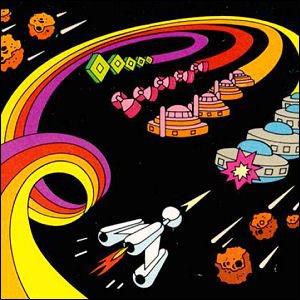 Activision releases the Megamania! cartridge for the Atari VCS home video game system. Inspired by the arcade game Astro Blaster, and subtitled “A Space Nightmare”, Megamania! pits players against airborne bow ties and hamburgers – and their own energy management skills. A national TV ad campaign featuring The Tubes heralds the game’s arrival.
Activision releases the Megamania! cartridge for the Atari VCS home video game system. Inspired by the arcade game Astro Blaster, and subtitled “A Space Nightmare”, Megamania! pits players against airborne bow ties and hamburgers – and their own energy management skills. A national TV ad campaign featuring The Tubes heralds the game’s arrival. ![]()
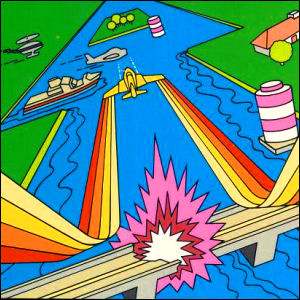 Activision releases Carol Shaw’s River Raid for the Atari VCS home video game system.
Activision releases Carol Shaw’s River Raid for the Atari VCS home video game system. ![]()
 Activision releases the Happy Trails cartridge for the Intellivision home video game system.
Activision releases the Happy Trails cartridge for the Intellivision home video game system. ![]()
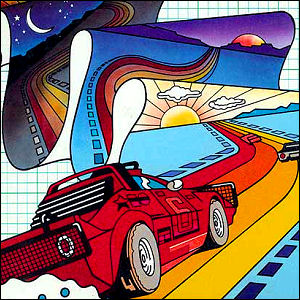 Activision releases the Enduro cartridge for the Atari 2600 home video game system. Competing directly with Atari’s home version of the coin-op racing game Pole Position, Enduro features night driving, different surface reactions (driving on ice), and numerous changes of scenery.
Activision releases the Enduro cartridge for the Atari 2600 home video game system. Competing directly with Atari’s home version of the coin-op racing game Pole Position, Enduro features night driving, different surface reactions (driving on ice), and numerous changes of scenery. ![]()
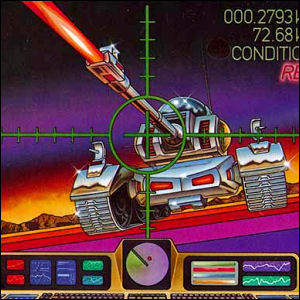 Activision releases the Robot Tank cartridge for the Atari 2600 home video game system, Activision’s answer to Atari’s home verison of Battlezone. As usual, Activision raises the ante with such features as a night vision mode and multiple targets.
Activision releases the Robot Tank cartridge for the Atari 2600 home video game system, Activision’s answer to Atari’s home verison of Battlezone. As usual, Activision raises the ante with such features as a night vision mode and multiple targets. ![]()
 Activision releases the Pressure Cooker cartridge for the Atari 2600 home video game system. A fast-paced video game version of the fast food industry, Pressure Cooker turns players into short-order cooks with very little time to accurately build burgers to order.
Activision releases the Pressure Cooker cartridge for the Atari 2600 home video game system. A fast-paced video game version of the fast food industry, Pressure Cooker turns players into short-order cooks with very little time to accurately build burgers to order. ![]()
 The first video game company to produce only software without a hardware platform of its own, Activision is heavily dependent on the Atari 2600 – and Atari’s falling fortunes bring Activision down with it. After third quarter losses of $4,000,000, a quarter of Activision’s workforce is laid off; Activision CEO Jim Levy cautiously predicts better results in 1984.
The first video game company to produce only software without a hardware platform of its own, Activision is heavily dependent on the Atari 2600 – and Atari’s falling fortunes bring Activision down with it. After third quarter losses of $4,000,000, a quarter of Activision’s workforce is laid off; Activision CEO Jim Levy cautiously predicts better results in 1984.
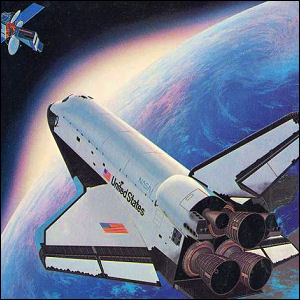 Activision releases Steve Kitchen’s Space Shuttle: A Journey Into Orbit for the Atari 2600 home video game system, an attempt to do a realistic flight simulator on limited hardware. Many of the console’s option switches – normally used to toggle difficulty levels, color or black & white graphics, and so on – are used for in-game functions instead.
Activision releases Steve Kitchen’s Space Shuttle: A Journey Into Orbit for the Atari 2600 home video game system, an attempt to do a realistic flight simulator on limited hardware. Many of the console’s option switches – normally used to toggle difficulty levels, color or black & white graphics, and so on – are used for in-game functions instead. ![]()
 Activision releases the Beamrider cartridge for the Atari 2600 home video game system.
Activision releases the Beamrider cartridge for the Atari 2600 home video game system.
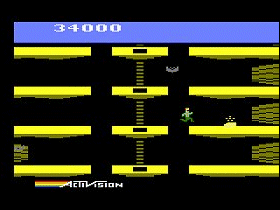 Activision releases the Pitfall II: Lost Caverns cartridge for the Atari 2600 home video game system, adding new adventures to Pitfall Harry’s resume and wowing players with sophisticated polyphonic music from a console infamous for its buzzes, bleeps and bloops. (The secret: the cartridge contains its own special audio chip.)
Activision releases the Pitfall II: Lost Caverns cartridge for the Atari 2600 home video game system, adding new adventures to Pitfall Harry’s resume and wowing players with sophisticated polyphonic music from a console infamous for its buzzes, bleeps and bloops. (The secret: the cartridge contains its own special audio chip.)
 Activision releases the H.E.R.O. cartridge for the Atari 2600 home video game system.
Activision releases the H.E.R.O. cartridge for the Atari 2600 home video game system. ![]()
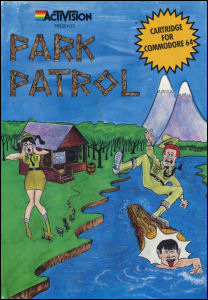 Activision releases Park Patrol for Commodore 64 home computers
Activision releases Park Patrol for Commodore 64 home computers ![]()
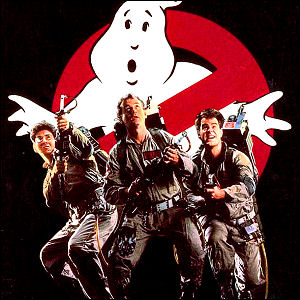 Just in time for Halloween, Activision releases the Ghostbusters cartridge for the Atari 2600 home video game system, based on the hit movie of the same name.
Just in time for Halloween, Activision releases the Ghostbusters cartridge for the Atari 2600 home video game system, based on the hit movie of the same name. ![]()
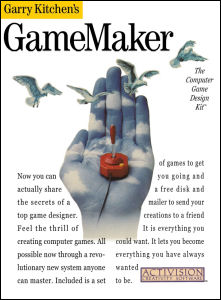 Activision releases the game development toolkit Garry Kitchen’s GameMaker for the Apple II home computer, allowing users to design their own computer games, including animated sprites, music, and more.
Activision releases the game development toolkit Garry Kitchen’s GameMaker for the Apple II home computer, allowing users to design their own computer games, including animated sprites, music, and more. ![]()